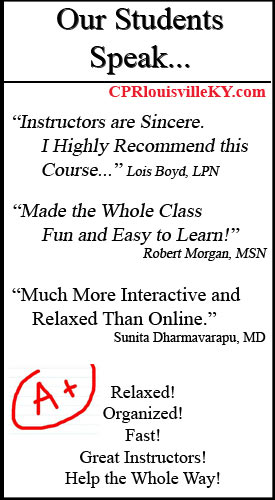Introduction
Cardiopulmonary Resuscitation (CPR) is one of the most essential life-saving techniques used during cardiac emergencies. When the heart stops beating, immediate intervention is crucial to maintaining blood flow to the brain and other vital organs. Traditionally, CPR followed the “ABC” approach: Airway, Breathing, and Circulation. This method aimed to secure an open airway, provide rescue breaths, and then focus on chest compressions to restore circulation.
However, over the years, medical professionals recognized the need for a shift in priorities, leading to the adoption of a new sequence known as “CAB”: Circulation, Airway, and Breathing. This change aimed to improve survival rates, particularly in cases of sudden cardiac arrest, by emphasizing the importance of immediate chest compressions. In this article, we will explore the journey from ABC to CAB, discussing the rationale behind this transformation and its impact on CPR effectiveness.
1. Understanding the Basics: ABC in CPR
The ABC method, which stands for Airway, Breathing, and Circulation, was the cornerstone of CPR for many years. This approach required rescuers to first ensure the airway was clear, provide rescue breaths to supply oxygen to the lungs, and then begin chest compressions to circulate oxygenated blood.
The logic behind ABC was rooted in the fact that oxygen is vital for organ function, especially the brain. The thinking was that opening the airway and restoring breathing should be the priority, followed by restoring circulation to move oxygen-rich blood throughout the body. This method made sense, especially in cases where breathing was compromised, such as in drowning or choking incidents.
ABC became the standard protocol in the mid-20th century, and CPR training programs worldwide were built around this sequence. However, while the theory behind ABC was sound, its practical application during emergencies revealed some limitations, particularly in terms of time efficiency and the actual needs of the heart during cardiac arrest. This recognition would eventually set the stage for the evolution of the CAB method, which prioritized restoring circulation first.
2. The Need for Change: Challenges with ABC
While the ABC approach served as the foundation of CPR for many years, real-world applications revealed several significant challenges. One of the primary issues with ABC was the potential delay in starting chest compressions, especially for untrained bystanders who might hesitate or struggle with managing the airway and breathing first. This delay, even by a few seconds, could critically reduce the chances of survival in cases of sudden cardiac arrest.
Delays in Chest Compressions
The process of managing the airway and performing rescue breaths often led to longer interruptions before starting chest compressions, which are vital for maintaining blood flow to the heart and brain. Studies showed that focusing on breathing first, particularly in adults experiencing cardiac arrest due to heart-related issues, often resulted in precious time being lost. This was problematic because most cases of cardiac arrest are caused by abnormal heart rhythms, like ventricular fibrillation, where circulation is the most immediate need.
Scientific Evidence Supporting Change
As research in resuscitation science advanced, it became clear that high-quality chest compressions played a far more critical role in saving lives than previously understood. A series of studies and real-world data suggested that survival rates could be improved significantly when chest compressions were initiated sooner. These studies indicated that oxygen already present in the blood and lungs during the first few moments of cardiac arrest could sustain vital organs, making chest compressions the highest priority in such emergencies.
Reevaluating Priorities
With these findings, medical professionals and organizations, like the American Heart Association (AHA), began rethinking the traditional ABC sequence. They recognized that by delaying chest compressions, the chances of survival were diminished, especially in cases of sudden cardiac arrest. The emphasis needed to shift toward circulation first, ensuring blood flow to vital organs while airway and breathing management could follow.
The increasing body of evidence pointing to the necessity of uninterrupted chest compressions laid the groundwork for a significant change in CPR guidelines, ultimately leading to the introduction of the CAB sequence.
3. The Introduction of CAB: A Paradigm Shift
In 2010, the American Heart Association (AHA) officially revised its CPR guidelines, replacing the long-standing ABC approach with a new sequence: CAB—Circulation, Airway, and Breathing. This shift represented a major paradigm change in how CPR was to be administered, particularly in cases of sudden cardiac arrest. The central idea behind CAB was simple but profound: prioritizing chest compressions to maintain blood flow before addressing the airway and breathing.
Why Circulation First?
The reasoning behind the CAB approach was rooted in the understanding that immediate chest compressions are critical in preserving life. Sudden cardiac arrest, which is often caused by arrhythmias like ventricular fibrillation, requires quick restoration of blood flow to prevent brain damage and increase the chances of survival. By starting with compressions, rescuers could ensure that oxygenated blood already present in the body continued circulating to vital organs, including the heart and brain.
Unlike other types of emergencies—such as drowning or choking, where breathing is the primary issue—most cases of adult cardiac arrest result from electrical problems in the heart. In these situations, the lungs usually still contain enough oxygen to sustain the brain for a brief period. Therefore, compressions to maintain circulation became the top priority, with the idea that airway and breathing management could be addressed afterward.
Simplifying the Process for Bystanders
One of the key advantages of the CAB approach is its simplification for bystanders. Studies indicated that many lay rescuers hesitated to perform CPR because of concerns about giving mouth-to-mouth resuscitation. By prioritizing compressions, which are easier to perform and can be done without any direct interaction with the patient’s airway, more bystanders were likely to step in and take action. This shift encouraged quicker intervention, which is critical in the first few minutes of cardiac arrest.
AHA’s Official Endorsement
The AHA’s endorsement of CAB in 2010 marked a turning point in CPR training and practice. By revising its guidelines to emphasize compressions first, the AHA hoped to increase survival rates in out-of-hospital cardiac arrests. The new guidelines instructed that rescuers immediately start with 30 chest compressions before moving on to check the airway and provide breaths. This change acknowledged the critical importance of uninterrupted chest compressions in maintaining the circulation of oxygen-rich blood to the brain and other vital organs during the early stages of cardiac arrest.
The introduction of CAB was widely accepted by the medical community and has since become the standard in CPR education and emergency response. Its adoption was based on mounting evidence that compressions-first CPR could significantly improve survival rates, particularly in adults experiencing sudden cardiac arrest.
4. Benefits of the CAB Approach
The shift from ABC to CAB in CPR has proven to offer several important benefits, particularly in improving the effectiveness of life-saving measures during cardiac arrest. By emphasizing chest compressions over airway management and breathing, the CAB method has demonstrated significant improvements in survival rates, especially in out-of-hospital scenarios where immediate intervention is crucial.
Improved Survival Rates
Numerous studies and case reviews have confirmed that the CAB method leads to better outcomes, particularly in adults experiencing cardiac arrest due to heart-related issues. Immediate chest compressions help maintain blood flow to vital organs, keeping them oxygenated during the critical minutes before professional medical help arrives. For example, research has shown that uninterrupted chest compressions result in higher survival rates, especially when performed within the first few minutes of cardiac arrest.
By starting with compressions, the CAB approach addresses the immediate need to restore circulation, which is often the most pressing concern in cardiac emergencies. This is especially relevant in cases where bystanders are untrained or unsure of how to manage the airway and breathing. Studies have found that by focusing on compressions, rescuers are more likely to act quickly and effectively, improving the chances of survival.
Simplification for Lay Rescuers
One of the most significant benefits of the CAB approach is how it simplifies CPR for the general public. The traditional ABC sequence required a more complex understanding of how to manage the airway and provide breaths. This complexity often caused hesitation among bystanders, many of whom were either unsure of how to perform rescue breaths or uncomfortable with the idea of mouth-to-mouth contact.
The CAB method, by starting with compressions, makes the process more straightforward. Anyone can perform chest compressions, even without formal CPR training, which has led to an increase in bystander intervention. For example, compression-only CPR has become a more widely accepted option, especially for untrained rescuers. This method allows individuals to step in quickly, without needing to worry about the technicalities of airway management. As a result, more people are willing to help, leading to quicker responses and better outcomes.
Focus on High-Quality Chest Compressions
Another advantage of the CAB method is its emphasis on the quality of chest compressions. In recent years, research has shown that the effectiveness of CPR is largely dependent on how well compressions are performed. High-quality compressions, meaning those that are performed at the correct depth (about 2 inches) and rate (100-120 compressions per minute), are essential for maintaining blood flow.
By starting with compressions, the CAB approach underscores the importance of providing consistent, effective chest compressions. This has also led to improvements in CPR training, where more focus is placed on teaching the correct technique for compressions. The result is that rescuers, whether professionals or laypeople, are better equipped to perform life-saving CPR, with a clearer understanding of the importance of continuous, high-quality compressions.
Critical for Out-of-Hospital Cardiac Arrests
The CAB method is particularly beneficial in out-of-hospital cardiac arrests, which account for the majority of cardiac emergencies. In these situations, bystanders play a critical role in initiating life-saving measures before emergency medical services arrive. The sooner chest compressions are started, the better the chances of survival.
The CAB approach, by simplifying CPR and prioritizing the most critical action (circulation), significantly increases the likelihood of bystanders stepping in to help. This is crucial because survival rates for out-of-hospital cardiac arrest drop dramatically with each minute that passes without intervention. CAB increases the chances of immediate action, making a substantial difference in the outcome of these emergencies.
5. Challenges and Criticisms of CAB
While the shift from ABC to CAB has been largely successful and widely accepted, the transition has not been without its challenges and criticisms. Although the benefits of prioritizing chest compressions are clear in most cases, some experts and medical professionals have raised concerns about potential downsides to the CAB approach, particularly in specific types of emergencies or patient populations.
Criticism from Medical Professionals
Some healthcare providers have expressed concerns about the potential for confusion caused by changing the well-established ABC method to CAB. For decades, CPR training had emphasized airway and breathing as the initial steps, and some professionals worried that this abrupt change might lead to hesitation or uncertainty, particularly among seasoned practitioners who were accustomed to the old guidelines. The shift in priorities also required a significant overhaul of training materials and methodologies, which added a layer of complexity to the adoption of CAB.
Another concern is that the CAB method, with its emphasis on circulation, might result in a reduced focus on proper airway management and ventilation. Although the CAB approach assumes that oxygen reserves in the lungs can sustain the brain and organs for a short period, there are cases—particularly in children, infants, and drowning victims—where compromised breathing is the primary issue. In such cases, focusing on chest compressions before addressing airway management may not always be the most effective strategy.
Situational Limitations
While the CAB approach has been proven effective in sudden cardiac arrest situations, it may not be as universally applicable in other types of medical emergencies. For example, in cases of drowning or choking, the cause of cardiac arrest is typically hypoxia, or lack of oxygen, rather than a heart rhythm problem. In these situations, restoring breathing and ensuring the airway is clear are the top priorities. Critics of the CAB approach argue that by standardizing CAB for all cardiac arrest scenarios, there is a risk that rescuers may overlook the need for immediate airway management in such cases.
Additionally, some research suggests that the CAB method may not be as effective in pediatric cases. Unlike adults, where cardiac arrest is often caused by heart-related problems, children and infants are more likely to experience cardiac arrest due to respiratory failure or airway obstruction. In these cases, the ABC approach may still be more appropriate, as it prioritizes opening the airway and providing rescue breaths, which are critical for younger patients.
Ongoing Adjustments and Research
Despite these challenges, the medical community continues to study and refine CPR guidelines to ensure the best possible outcomes for patients. Research is ongoing to explore how the CAB method can be further optimized, especially for special cases like pediatric emergencies or non-cardiac-related arrests. Additionally, advancements in technology, such as CPR feedback devices, are helping to improve the quality of chest compressions and ensure that rescuers are providing the best possible care.
As with any medical guideline, CPR protocols must evolve with the latest research and real-world application. The transition from ABC to CAB was a step forward, but it also highlighted the need for flexibility and continued innovation to address various emergency scenarios effectively.
6. The Future of CPR: Innovations and Training
The evolution from ABC to CAB in CPR highlights the importance of continuous improvement and adaptation in life-saving techniques. As medical research and technology advance, CPR guidelines and training methods are evolving to further improve survival rates and make CPR more accessible and effective for both professionals and the general public.
Technology Enhancing CPR
One of the most significant areas of innovation in CPR is the development of technology that assists rescuers in delivering high-quality chest compressions. Devices like automated external defibrillators (AEDs) have become more widespread in public places, enabling even untrained bystanders to deliver potentially life-saving shocks to a person in cardiac arrest. Many modern AEDs come with built-in CPR coaching, guiding users through the process of compressions and defibrillation with visual and auditory prompts.
Additionally, CPR feedback devices are being incorporated into training and real-life resuscitations. These devices measure the depth and rate of chest compressions and provide real-time feedback to rescuers, ensuring that compressions meet the recommended standards. Such tools are vital in maintaining the high-quality compressions that the CAB approach emphasizes, helping to improve the outcomes of cardiac arrest cases.
Improving Bystander CPR Rates
While professional responders are trained in CPR, bystanders often hesitate to intervene, either due to a lack of training or fear of doing something wrong. The shift to CAB, which simplifies CPR for laypeople, has already encouraged more bystanders to perform hands-only CPR, a crucial development in cardiac arrest emergencies where time is of the essence.
Public education initiatives are focusing on increasing awareness of hands-only CPR, teaching people that even without formal training, they can still make a difference by performing chest compressions. Organizations like the American Heart Association are creating accessible training programs, such as brief instructional videos and online courses, to help reduce the barriers to learning CPR. These programs emphasize the CAB method, making CPR more intuitive and reducing the fear that often prevents bystanders from acting.
Emerging Techniques and Research
The future of CPR will likely see further refinements based on ongoing research in resuscitation science. For example, some studies are exploring how to optimize the frequency of CPR pauses for defibrillation or whether advanced airway devices can be used earlier in certain cases. There is also increasing interest in personalized CPR protocols that consider factors like the patient’s age, cause of cardiac arrest, and underlying health conditions to tailor resuscitation efforts more effectively.
Moreover, virtual reality (VR) and augmented reality (AR) are being introduced into CPR training, offering more immersive and realistic practice environments. These technologies can simulate high-stress situations, preparing both lay rescuers and professionals for real-world emergencies. This innovative approach helps build confidence and muscle memory, ensuring faster and more accurate responses during actual cardiac arrest events.
Continuous CPR Guideline Updates
Medical organizations like the American Heart Association periodically review and update their CPR guidelines to incorporate the latest evidence and best practices. As we learn more about how the human body responds to cardiac arrest and resuscitation, CPR techniques will continue to evolve. The future of CPR will likely involve ongoing collaboration between researchers, medical professionals, and educators to ensure that guidelines reflect the most current and effective methods for saving lives.
Conclusion
The journey from ABC to CAB in CPR has marked a significant shift in how we approach life-saving techniques for cardiac arrest. By prioritizing chest compressions over airway and breathing management, the CAB approach has improved survival rates and made CPR more accessible to both professionals and bystanders. However, as medical science continues to advance, CPR guidelines will likely evolve further, incorporating new technologies and research findings.
The key takeaway is that CPR is an evolving practice. Whether you’re a trained professional or a bystander, staying informed about the latest techniques can make the difference between life and death in an emergency. By continually improving CPR methods and making training more accessible, we can help save more lives in the years to come.






